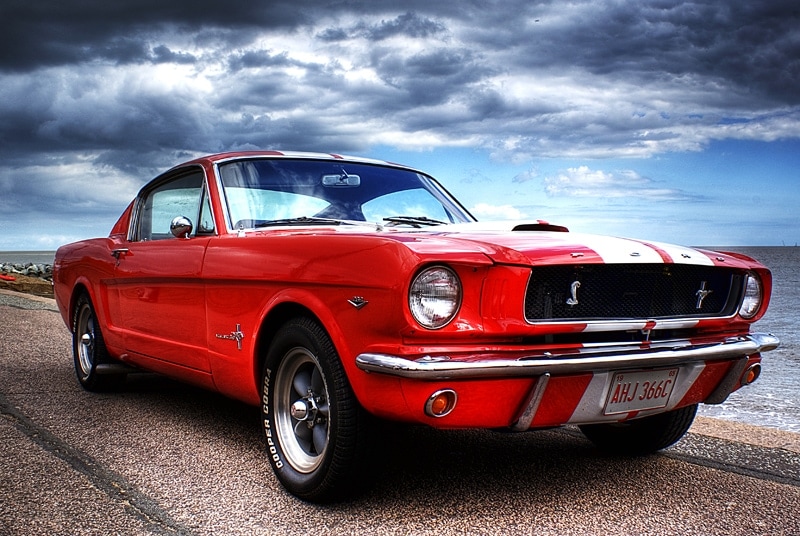Speaking of fashion words and strange concepts in photography, you’ve probably come across this word: “Bracketing or Bracketing?”Navigating an article or tutorial related to photography. I don’t know if at the time you had the slightest curiosity about this concept, or did you just turn the page like the one who doesn’t want the thing?Or you entered it, but you completely forgot. Whatever your situation, whether you need to refresh or clarify the concept, or just rediscover it, this article is for you.
Bracketing is nothing more than taking several photos of the same composition and frame, but varying a parameter, which can be exposure, focus, white balance, flash or ISO.
- When we can’t (rather our team) accurately capture all the right exposure.
- Focus.
- Or white balance settings.
- We take several shots by slightly varying the settings we want to adjust.
The most common is the exhibition for these high contrast scenes (with a lot of light difference between lights and shadows) in which we often have to sacrifice lights or shadows.
Thanks to the fork, you will have several shots of the same scene with different values, from these shots you can:
As I have mentioned before, the best known is that of the exhibition, and it is also to which we refer most of the time we find it written. In SLR cameras it is usually possible to access them through an external device. BKT (Bracketing) button or in the menu. If you don’t have the option, remember that you can always do it manually by varying the different settings.
Many cameras have an automatic system that allows you to take multiple photos simultaneously at different exposure values. Normally, does the camera take a photo with the exposure value?(Which is not so much because of the difficulty of the scene), another slightly underexposed, and another slightly overexposed; a total of three images.
If you don’t have this setting, will you have to make these settings?Of course, for this type of technique you will need, or at least it is highly recommended, a tripod so as not to vary the framing of the scene. If you do not want to vary the depth of field, it is ideal to adjust the speed of the scene and not the aperture.
Applications: For the well-known HDR (High Dynamic Range) it has as many lovers as detractors but that at least once you have to try ;-). This article will solve all your doubts about it, using a very simple program : Photomatix Pro.
When you need to increase the depth of field but can’t use the usual techniques (modifying the diaphragm), you can also use focus bracketing. With the same idea as exposure, through different shots focused on different areas of the image, you can greatly increase the depth of field of your image by joining them with a retouching program like Photoshop or Helicon Remote.
Apps: If you haven’t followed me too much so far, will you go now?It is mainly used for macro photography. You keep in mind these scenes of small insects or petals or enlarged objects at impossible scales, don’t you remember how limited the focus area of the image is?, because it’s not for fun, it’s something very associated with this type of photography.
Combined with natural light, not only flash-based, but as an extra flash, it’s about adjusting the same thing with different power values to get the best possible result.
If you’re shooting in RAW, can you move on to the next point, as you can do so in post-processing by simply moving?If not, read on. It is a matter of taking different photos, varying the white balance chosen for each one. Well, because it’s often hard to see when taking the photo which white balance is best at that time, it’s best to try some logical options (if you’re under fluorescent lighting it doesn’t make much sense to use daylight, for example). To get the best result. As you can see, the fork not only intends to unify different images through a specific software, but sometimes relies, through several “tests”, on the ability to choose the most correct values for each occasion.
When you need to maintain the speed and aperture exposure values, you can vary the ISO values, taking into account that the noise in the image will vary from one ISO setting to another, although if the difference is a few steps it will be virtually negligible, you should take this into account especially when working with a high ISO (plus ISO plus noise).
Do you see how these words (terrible-strange-unpronounceable-impossible to remember) that sometimes appear in the arduous path of the self-taught amateur photographer are actually nothing? As long as you understand the concepts, you can call it bracketing, bracketing, or “I take some identical photos by varying just one of the shot settings depending on whether I need a more accurate exposure of all parts of the scene or more attention?”
In short, don’t be intimidated, a few words are nothing in the face of your desire to learn, so now you can put in parentheses, white scales, openings, hyperfocal distances or whatever, will we all discover the simplest explanation of each of us?
And you know, if you liked it, it was helpful and you think someone else might be interested in learning how to improve their images through the bracket, be generous, Share!On Facebook, Google or Twitter. Thank you very much?

